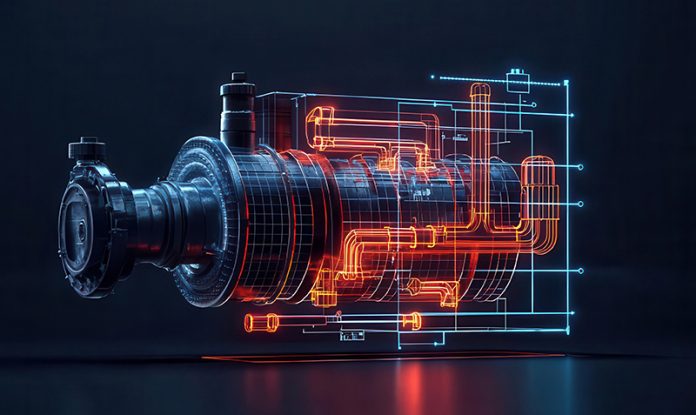UK industry could clinch energy security by capturing ‘free energy’ from natural and waste heat. Insight by Richard Lek, President EMEA, Johnson Controls and Katie McGinty, Chief Sustainability Officer and External Relations Officer, Johnson Controls.
Every day, vast amounts of valuable thermal energy escape unnoticed from Europe’s critical industries and institutions, or remain unused in the surrounding air, water, and soil.
This overlooked resource could be a game-changer for Europe’s energy resilience and competitiveness. Thanks to advances in heat pump technology, we now have the tools to capture and convert this ambient, waste heat into reliable, clean energy.
Businesses and communities across Europe are already putting this into practice, with impressive results. In 2024, Johnson Controls’ heat pump systems helped customers slash energy costs by 53% and reduce carbon emissions by 60%. Far from being a futuristic vision, this is already happening today.
Real-world success stories
Sound too good to be true?
Let’s look at organisations realising this powerful win-win every day. A hospital in Germany tapped into heat from 200 metres beneath the building using a heat pump system. The result?
A 30% reduction in energy costs and enough heat generated to meet 80% of the hospital’s demand. In Denmark, the Aalborg hospital has nearly eliminated its carbon footprint, cutting emissions by up to 90% while reducing energy bills by 80%. In the UK, Hounslow Council made the switch from gas boilers to air-source heat pumps across more than 60 schools and public buildings, halving both energy costs and CO₂ emissions.
This opportunity extends well beyond the public sector. A major food producer in Spain installed heat pumps at two of its facilities, saving €1.5 million annually and cutting 2,000 tonnes of CO₂ emissions, the same as the yearly output of around 400 households. Meanwhile, Nestlé’s Biessenhofen plant in Germany significantly cut energy costs for hot water production while lowering CO₂ emissions by 10%.
What do these examples have in common? The same proven heat pump technology, made here in Europe by us.
A catalyst for a competitive, secure, and sustainable Europe
The opportunity is bigger than individual buildings or even companies. According to European Heat Pump Association, industry accounts for more than 60% of all energy use in Europe’s manufacturing sector, much of it in the form of heat. The waste heat currently lost across the EU could meet nearly all the bloc’s demand for heating and hot water.
Tapping into this resource is not only an environmental imperative, but also an economic one. EU businesses currently pay two to three times more for electricity than their counterparts in the US or China, according to the Draghi Report on European competitiveness. To close that gap and drive sustainable growth, Europe must lower energy costs while cutting emissions. Heat pumps can do both.
Under the Clean Industrial Deal, European leaders have a clear opportunity to integrate heat pumps into policy and funding frameworks, providing incentives and investment certainty.
But reform is also needed around electricity pricing. In Germany, for instance, taxes and levies made up around 30% of electricity bills in 2024, artificially inflating costs and stifling the economic case for switching to clean, electric solutions like heat pumps.
A hidden energy resource, waiting to be used
Heat pumps are more than a tool for cutting emissions, they’re a platform for growth. These systems tap into the ambient energy that surrounds us and transform it into a powerful source of clean heat for industrial processes, buildings, and municipal heating networks.
Wastewater treatment plants are already demonstrating the potential. In Utrecht, the Netherlands, residual heat from treated wastewater now warms around 20,000 homes. From 2026, Hamburg will use large-scale heat pumps to recover heat from its wastewater system, providing clean heat to 39,000 homes through its district heating network.
The same principle applies across high-heat industries such as pharmaceuticals, food production, and chemicals. Even the rapidly growing data centre sector, one of the biggest new sources of waste heat, offers vast untapped potential.
The IEA estimates that reusing heat from data centres could meet around 10% of Europe’s heating demand by 2030. As artificial intelligence continues to drive up computing demand, the opportunity will only grow.
Europe’s heat pump moment
At a time when energy security, industrial competitiveness, and climate action are more tightly linked than ever, heat pumps offer a scalable, European-made solution. They can drive down costs, unlock local energy resources, and reduce emissions, while supporting high-value manufacturing and technology jobs.
Europe has the engineering talent, the manufacturing base, and the policy momentum to lead the world in this technology. With the right political will, heat pumps could become one of the continent’s next great industrial success stories.
It’s time to put our hidden heat to work, for the economy, the planet, and a cleaner, more competitive future made in Europe.





